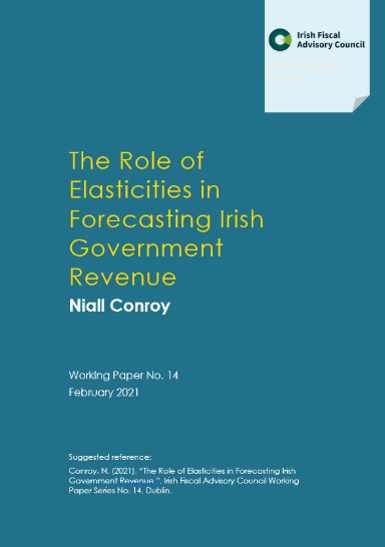This paper assesses the role of elasticities in forecasting Irish government revenue. The paper shows that using policy-adjusted elasticities yields significant improvements in forecast accuracy. This paper also extends the forecast horizon examined out to four years ahead. [1]
Why do forecasts of government revenue matter?
Sound economic and budgetary policy requires projections of government revenue. More accurate forecasts of government revenue should result in better budgetary planning and policymaking.
What are tax elasticities?
Tax elasticities describe the relationship between tax revenue collected and the tax base. For example, the amount of income tax collected is related to the amount of taxable income earned in the economy. Tax elasticities can provide insight as to the progressivity of different tax headings.
What role do elasticities play in forecasting government revenue?
Changes in tax revenue are determined by two key factors, changes in the tax base and changes in policy. Tax elasticities are key to determining the impact changes in the tax base have on government revenue.
What are the results?
We examine three revenue headings: Income Tax, Value Added Tax (VAT) and Pay Related Social Insurance (PRSI). Income tax forecasts see the biggest gains from using policy-adjusted elasticities. This reflects significant income tax policy changes which occurred over the sample period. These improvements in forecasts are most evident over longer forecast horizons where errors cumulate. We use formal tests to show that these improvements are statistically significant.
[1]The opinions expressed and arguments employed in this paper do not necessarily reflect the official views of the Fiscal Council.

